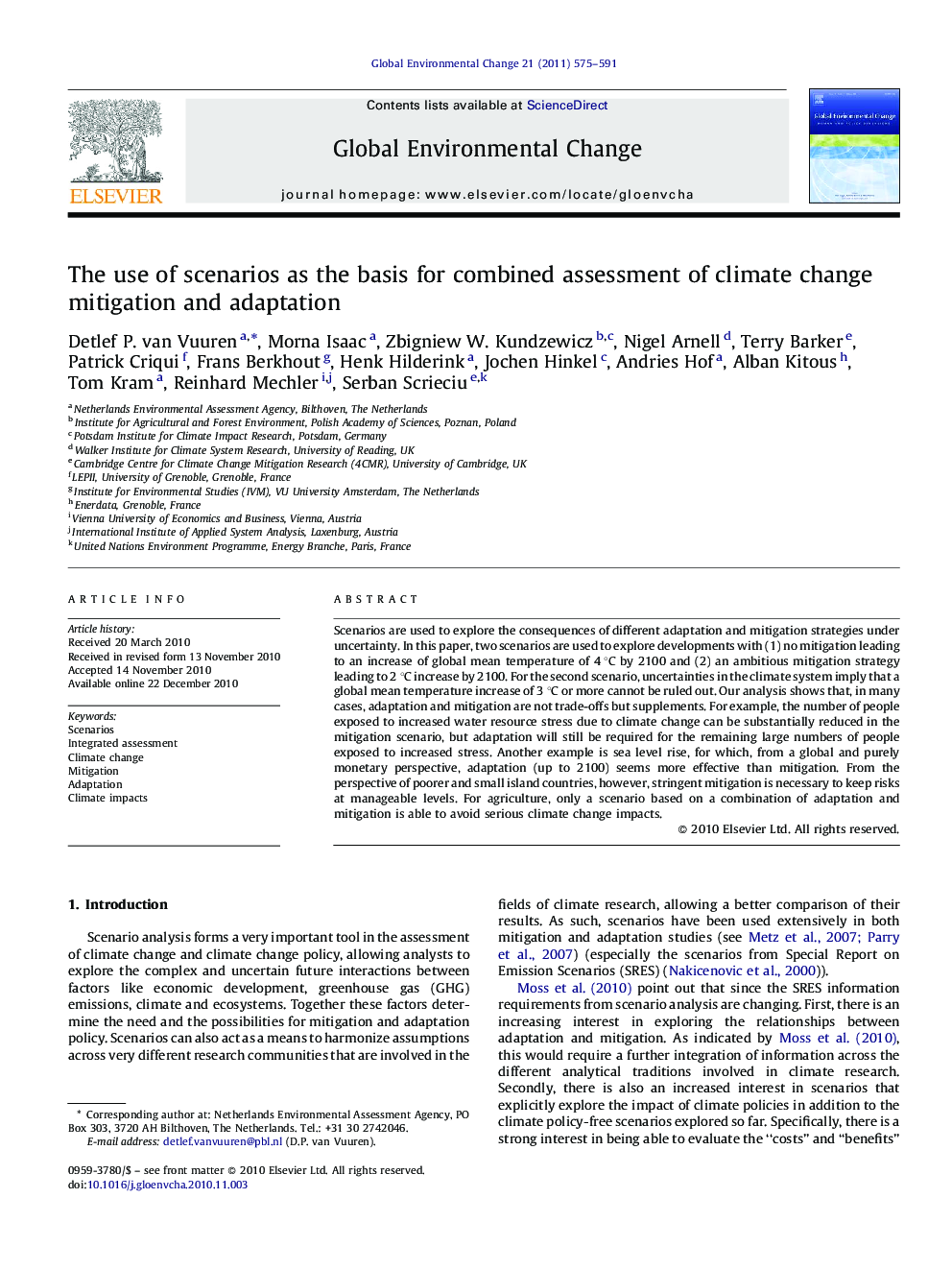| کد مقاله | کد نشریه | سال انتشار | مقاله انگلیسی | نسخه تمام متن |
|---|---|---|---|---|
| 1054941 | 946864 | 2011 | 17 صفحه PDF | دانلود رایگان |

Scenarios are used to explore the consequences of different adaptation and mitigation strategies under uncertainty. In this paper, two scenarios are used to explore developments with (1) no mitigation leading to an increase of global mean temperature of 4 °C by 2100 and (2) an ambitious mitigation strategy leading to 2 °C increase by 2100. For the second scenario, uncertainties in the climate system imply that a global mean temperature increase of 3 °C or more cannot be ruled out. Our analysis shows that, in many cases, adaptation and mitigation are not trade-offs but supplements. For example, the number of people exposed to increased water resource stress due to climate change can be substantially reduced in the mitigation scenario, but adaptation will still be required for the remaining large numbers of people exposed to increased stress. Another example is sea level rise, for which, from a global and purely monetary perspective, adaptation (up to 2100) seems more effective than mitigation. From the perspective of poorer and small island countries, however, stringent mitigation is necessary to keep risks at manageable levels. For agriculture, only a scenario based on a combination of adaptation and mitigation is able to avoid serious climate change impacts.
Research highlights▶ Integrated scenario analysis as presented here can form a good basis for exploring the different consequences of policy choices (including uncertainties); it is not feasible, given uncertainties to determine an optimal mix between mitigation, adaptation and residual damages. ▶ In many cases, adaptation and mitigation should not be treated as (perfect) trade-offs but as supplements. ▶ For several impacts categories, such as impacts on agricultural yields, water stress and sea level rise only a combination of mitigation and adaptation can substantially reduce climate risks. ▶ Important foci for further analysis include the linkages between assessment of physical changes and monetary impact analysis, variability and changes in extreme events, the potential role of large scale disruptions and governance.
Journal: Global Environmental Change - Volume 21, Issue 2, May 2011, Pages 575–591